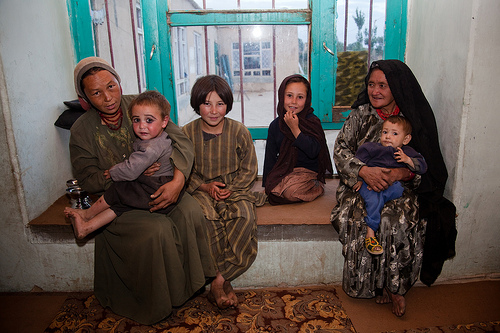
Afghan asylum seekers: who they are and why they seek asylum
If the Scherger Air Base becomes an Immigration Detention Centre (IDC), the people most likely to be locked up there are Hazara people from Afghanistan.
Hazaras are a minority group in Afghanistan who have been persecuted for centuries but more recently this has degenerated to a form of genocide under the Taliban. Hazaras are readily identified by their ethnicity and are Shia Muslims where the Taliban and Pashtun are Sunni – rather like Catholics and Protestants, although we stopped killing each other some time back.
Hazaras in spite of supporting the Karzai Government and Coalition forces have been subject to increasing waves of violence from the Taliban and the Pashtun. They have survived in the past by moving to neighbouring countries , Iran and Pakistan until the violence passes. There were up to 2 million Hazaras living and working under hard conditions in Iran until the recent economic down turn. Now the Iranian authorities round them up and truck them to the border where Pashtun and Taliban forces are selective about who survives.
One young man explained to me recently that he and his father were tailors working together, supporting the family in Iran after fleeing from Afghanistan until his father disappeared, presumed picked up on his way back from work. This boy’s mother, afraid for her son after her husband vanished, would go out in the evening, hidden in her burqa and check where the Iranian police were operating and ring her son to warn him which roads to walk home. He said that he left after his friends were killed by these squads because he knew that it was only a matter of time before he too was caught.
A girl told me of her grandfather, an old man who was picked up but was not killed at the border. Maybe they thought because he was so old and sick that he would not make it anyway. He got to Kabul but then could not return to his village. With his political profile he was not safe so he kept going to Pakistan. There he found people smugglers to get him out. Now he sits and waits in Curtin Detention Centre, near Derby for the 6 month suspension to be lifted so that he can apply for asylum. The irony is that this girl and her mother came through Curtin detention in 2000 when they fled.
Today they are Australian citizens wanting to look after their grandfather.
Quetta in Pakistan, a traditional bolthole for Hazaras is no longer safe. The Taliban have arrived and they shoot Hazaras on sight believing that it is their duty to kill these “infidels”. The Pashtuns kill them because they have stolen the Hazara lands and businesses and don’t want them to return to claim them back.
With their usual places of sanctuary closed, the Hazaras are searching further afield for places where they can survive, which brings them to Australia although not in the same numbers as Europe. In 2008- 2009, there were 939 Hazaras arriving by boat in Australia. At the same time there were 25,000 heading to Europe. On the journey to Australia many have experienced the brutal Indonesian immigration prisons. Coming from a landlocked country and with no experience of the sea, they find the boat journeys very frightening.
It is difficult for the Hazaras to get their families out of Afghanistan which is why most men arrive alone hoping to bring their families when they are accepted. This is a cause of great worry when they are locked up in detention for long periods. The other group most likely to break down in detention are people who have been tortured. In the past weeks I have visited people in detention centres in Melbourne, Villawood and Darwin. There I have seen people with scars and broken bodies. Some have been hung upside by the arms dislocating shoulders and causing life long pain, many have been beaten or burnt with acid and hot metal bars. What is not visible is what this deliberate causing of pain , does to the mind. One man showed me his immigration decision which refused him refugee protection. It read “ I accept that you have been tortured by the Taliban but you are an ordinary man ( meaning a man without a high profile) therefore you can return to live in Afghanistan”. This man fled after his father and brother were killed and he was tortured, losing his business and his home. He has lost everything and fears for his life if he is returned.
Not all people who come to Australia seeking asylum are refugees. This is a fact and is why we have a strict refugee determination process to assess claims. However there is now a risk that politics is overiding this process. Until April 2010, 99% of Hazara’s claims were accepted on the evidence presented, now this has dropped to a threatened 30% becasue the Government says it has evidence that conditions are improving in Afghanistan.
At the same time Australia has lost 21 sons in the fighting. Professor William Maley, an Afhanistan expert says that conditions are less secure for Hazaras than ever. The evidence does not add up. The Hazaras in Australian detention centres are in for a long wait for justice. Australians in rural, regional and remote communities have proved the most welcoming and understanding of all in this country however maybe waiting in isolated detention centres far from their own community, doctors and mental health services is not such a good idea.
Leave a reply

Connect with us
Need help from the ASRC? Call 03 9326 6066 or visit us: Mon-Tue-Thur-Fri 10am -4pm. Closed on Wednesdays.